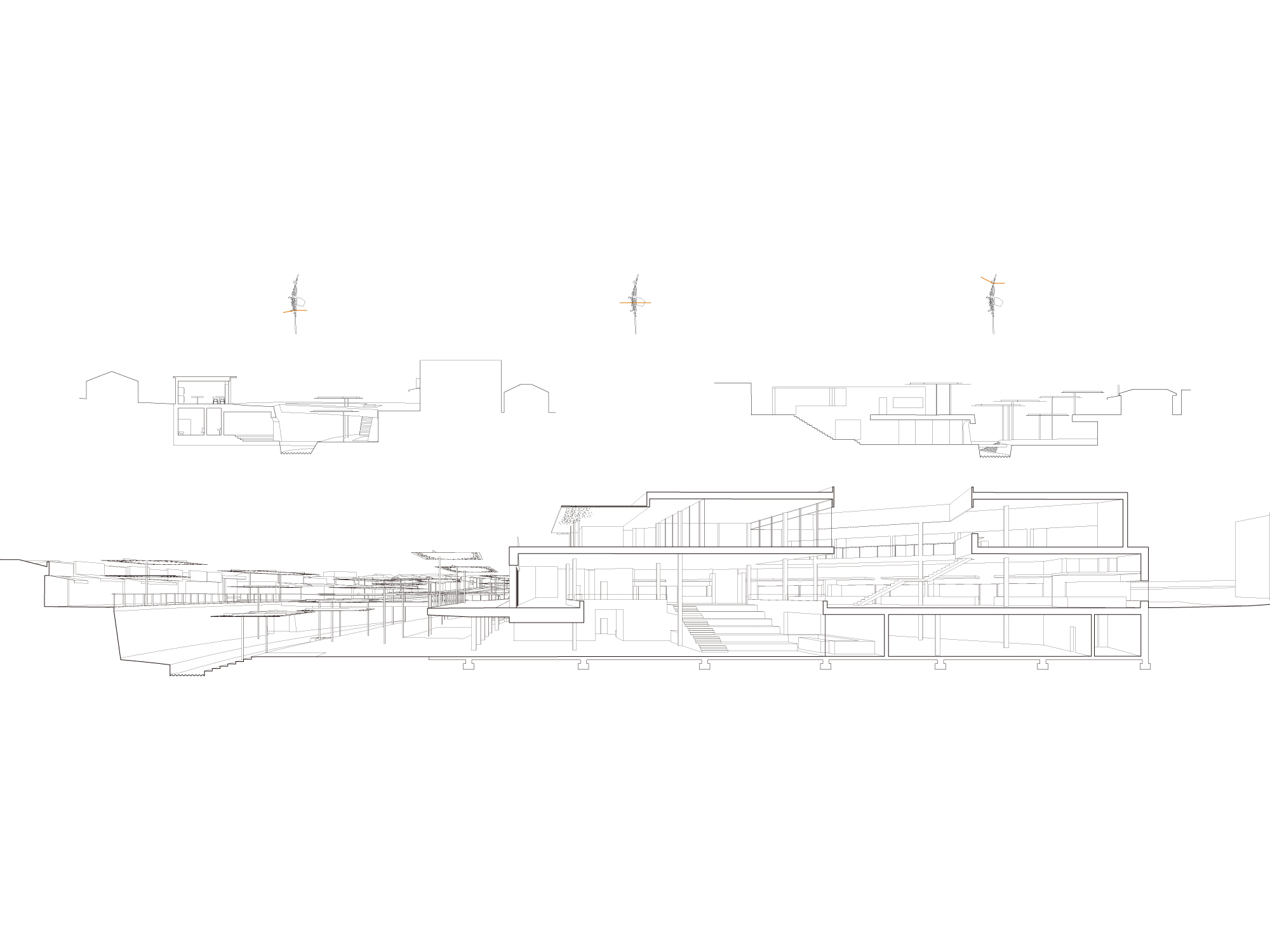Market Commons
과거 전통시장은 물품거래를 매개로 다양한 관계가 형성되는 커뮤니티의 장이었습니다. 잊혀져 가는 전통시장을 되살리기 위해 현재 각 시장에는 아케이드가 천편일률적으로 씌워지고 있습니다. 이는 시장의 낙후된 상업성을 높이는 데에만 초점을 맞추었을 뿐, 시장의 복합적 역할 및 주변과의 관계는 충분히 고려되지 못하고 있습니다. 시장이 어떠한 방식으로 공동체를 다시 연결하고, 지속가능한 장소가 될 수 있을지 고민했습니다.
서울에서 1인가구가 가장 많은 지역에 위치한 관악구 삼성동 시장은 하천 영역 위 무허가 정착촌에 형성되었습니다. 일대에서 가장 오랜 역사를 지녔지만 현재 전면 철거 방식의 재개발이 예정되어 있습니다. 시장은 두 길로 갈라지며 그 중 하나는 도림천의 지류가 복개된 곳입니다. 300m가 넘지만 중간 통로가 없어 답답하고, 동측 대학동과는 단절되어 있습니다.
지리적 특징을 살려 시장의 가운데 필지로 도림천의 보행권을 끌어오고, 단절되어있던 양편의 길들을 앵커시설과 함께 연결합니다. 기존 시장의 선형성을 구부려 커뮤니티 시설 및 외부 공간과 결합하며, 푸드홀, 공유주방, 플리마켓, 단기 시장 등으로 시장의 외연을 확장합니다. 과거 시장은 파라솔, 어닝 등의 오밀조밀한 공간감 안에서 친밀한 관계를 형성했습니다. 획일적인 아케이드 대신 주변 건물의 스케일에 맞춘 캐노피의 중첩으로 공간의 강약을 만들고, 면들의 틈 사이로 시선을 유도합니다.
시장의 범위 내에 공공영역과 시설을 결합해, 접점이 없던 주민들도 함께 머무를 수 있는 로컬 허브로 시장을 다층화하고자 했습니다. 전통 시장이 활기를 되찾고, 소속감이 위기에 처한 현대 도시에서 공동체적 풍경이 다시 발견되기를 바랍니다.
Traditional markets were the place of communities where various relationships were formed through commodity trading. To revive forgotten traditional markets, they are now covered with arcades. This focuses only on increasing the underdeveloped commercial trait, but their complex role and relationship with neighbors are not fully considered. I wondered how the market could reconnect communities and become sustainable.
Samseong-dong Market, located in the area with the largest number of single-person households in Seoul, was formed in an unauthorized settlement above the stream area. It has the longest history in the area, but it is currently scheduled to be completely demolished. The market is divided into two paths, one of which is where a branch of Dorimcheon Stream are covered. Over 300 meters without middle passage, it feels cramped, and it's disconnected from the east side, Daehak-dong.
By utilizing the geographical features, Dorimcheon stream park are drawn to the center of the market, and the roads on both sides are connected with anchor facilities. It bends the linearity of the existing market to be combined with communal and external spaces, and expands the scope, including a food hall, a shared kitchen, flea market, and temporary market. In traditional markets, Intimate relationship was formed with the small sense of space of parasols and awnings. Instead of a uniform arcade, overlapping canopy on the scale of the surrounding buildings creates the dynamic of space and draws attention through gaps between panes.
By combining public areas and facilities within the scope of the market, I wanted to diversify the market into a local hub where residents who did not have contacts could stay together. I hope the traditional market will be revitalized and the scenery of community will be found again in modern cities where sense of belonging is in crisis.













